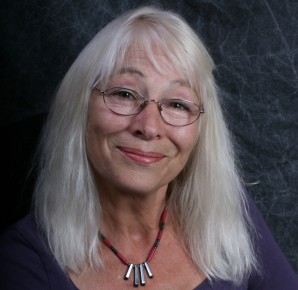Culling Mynahs and Crows, is a gritty, honest and uncompromising novel. There are some moments of high drama and some of tenderness, and a couple of places where shocking things happen, one the result of the fact that one of the main characters, Agnirekha, regards men with ‘chilling contempt.’
Yet, while it is a dramatic and tragic story on many levels, there is great subtly in it – it doesn’t tend to shout and roar at the reader when something sinister happens. It is introspective and political with some compelling images and scenes and has much to say about Indian society. The two main characters Agnishikha and Agnirekha are very different from each other – almost mirror opposites. Agnirekha is an ambitious newspaper reporter with a deal of paranoia to grapple with and male colleagues she dislikes, who ‘always saw [herself] as one removed from the flotsam-jetsam,’ and Agnishikha is a gentle soul whose innocence becomes her burden ultimately and who hardens considerably over time. As a reader from the UK, I found the more subtle aspects of the different social strata depicted slightly difficult to understand, but as a woman reader, I had no problem understanding the scenes involving attitudes and expectations of men towards women. The author of the book is firstly a poet and her skill with language and her love of it comes across in paragraphs such as when Agnirekha is thinking about her father:- ‘…a frail old man with a shock of silver hair, still handsome now, but in a delicate sort of way.’ And in:- ‘Agnishikha and Burima after a night in another abandoned truck, sped towards the snarling lip of dawn,’ or ‘The mosquito net swathed her in cobwebby stillness.’
The novel is divided into sections, the first and third concerning Agnirekha and her world and thoughts, the second and fourth Agnishikha and her very different life as a married woman. Part two is a thought provoking section, and here, early on, there is a warning sign of what is to come when Agnishikha’s shankha broke – ‘Her conch-shell bangle –her shankha– a shattered casualty of Sajal’s amour, lay scattered on the bed.’ The section of the book dealing with the young wife and her husband grows darker page by page, although Biswas is a subtle writer and infers rather than states. She has created two very convincing characters in the married couple and in addition, she conjures up some of the husband’s creepy political friends and how they bring pressure on the young couple in a fascinatingly unstated manner. But while the story flows into deeper and darker waters, Biswas writes tenderly about the relationship between Agnishikha and her parents:- ‘…Agnishikha would get an achy feeling in her heart; she would wish for her mother’s warm breast, neck and shoulders, smelling of paan, her father’s chair still holding his shape, the smell of Keo Karpin hair oil still clinging to the back rest.’ While the reader senses that disaster is on its way, there is comfort to be found in the almost magical relationship Agnishikha develops with Burima, an outcast and mentally unstable woman.
The story has a lot to say about the breaking down of social norms and taboos but also the power they can exert over individual lives, particularly those of women. The fourth section begins with the coming together of the two women and how Agnirekha, in her role as reporter, encourages Agnishikha to divulge her big secret, much to her husband, Sagal’s, horror. The story is published and as a result, Agnishikha slowly gets drawn into corruption and along the way reflects upon her life and relationships. In the disaster that has developed a change occurs in Sagal who becomes subservient and child-like because of his guilt about what happened to his wife. However, greater tragedy is yet to come which leaves Agnishikha feeling that ‘she could no longer recognise herself, her personality seemed to be changing by the minute…’



